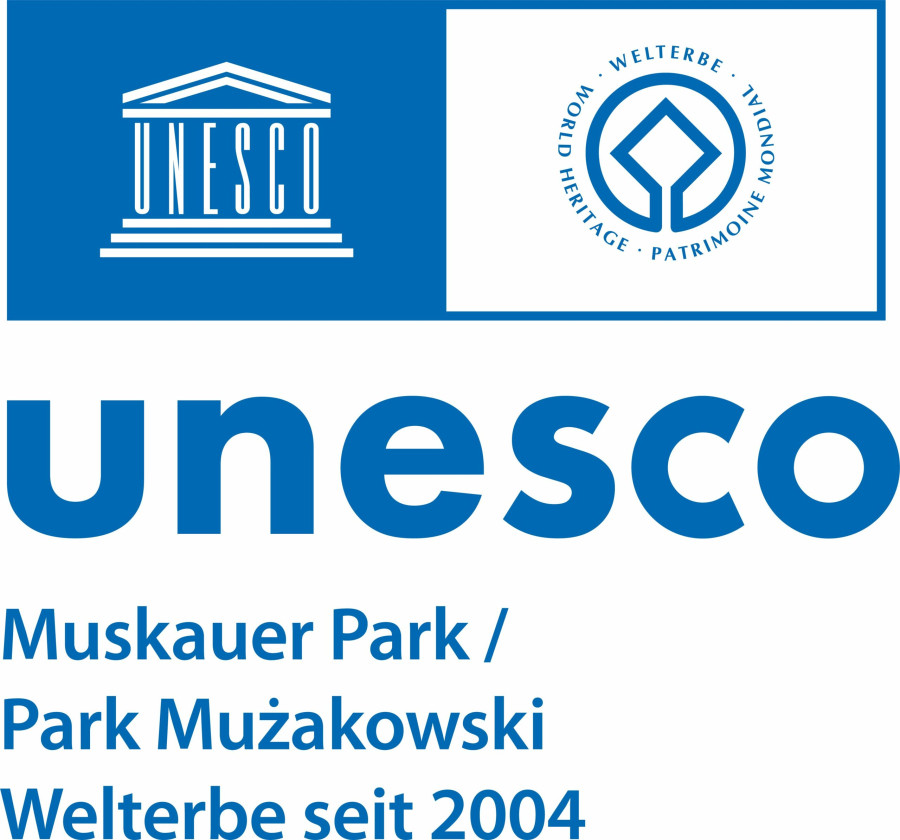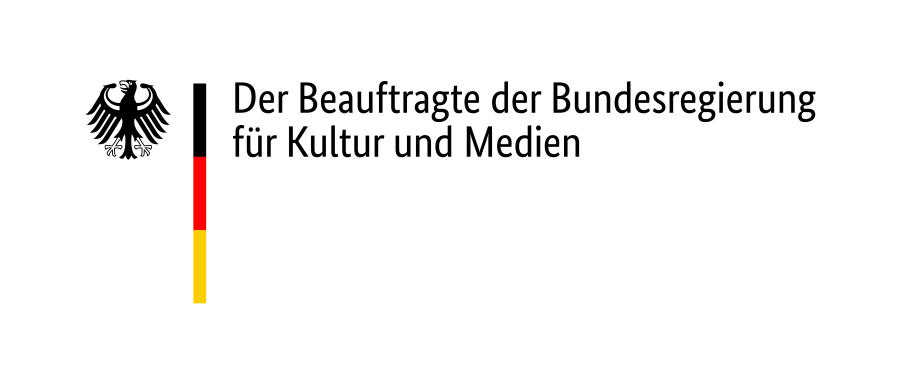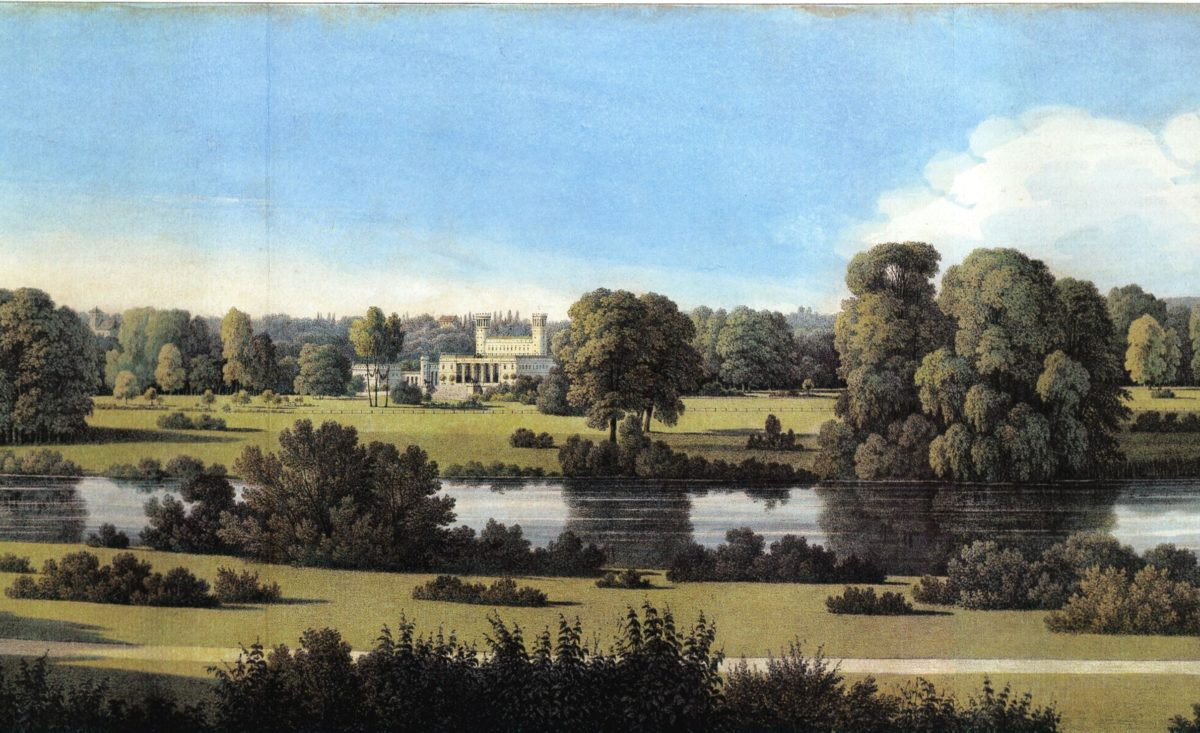
History
Pückler's parkomania
In 1815, Hermann Prince von Pückler-Muskau created a landscape garden that was to be unparalleled anywhere in the world. He designed his park to be exceptionally modern and artistic. Pückler thus became one of the most important German landscape designers. But not all of his garden dreams were realized - a comparison of vision and reality is worthwhile.
Vision and reality
Park creator Pückler was inspired by English gardens for his work. He was particularly impressed by their romantic castles and palaces, as they bore witness to centuries of rule. Pückler would also have liked to have a medieval castle built in Muskau. However, this never happened and Pückler wanted to have the New Palace rebuilt in a classical style. A design by architect Karl Friedrich Schinkel was already available, but nothing came of it due to a lack of funds. Instead, Pückler's successors gave the building a neo-Renaissance look.


Landscape art on the Lausitzer Neisse
“The park should only have the character of open nature and the landscape, so that the hand of man should be little visible in it and only be noticeable through well-maintained paths and purposefully distributed buildings.” (Pückler-Muskau, Hints on landscape gardening, 1834)
Inspired by his travels to English garden landscapes, Pückler developed his vision of the Muskau garden landscape in the valley of the Lusatian Neisse with its naturally given topography in several stages rather than continuously and as if from a single mold.

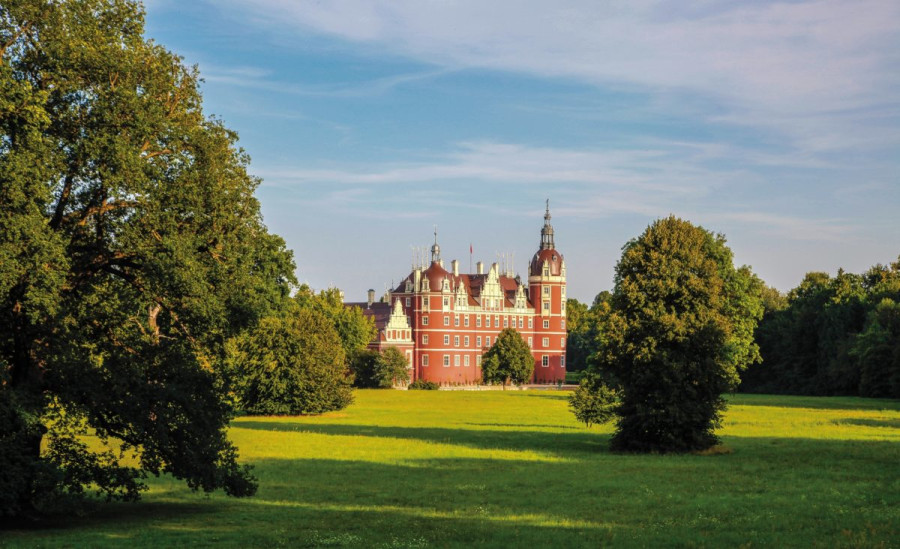
Tear Meadow and Muskau Castle
Pückler had the vision of extending the old gatehouse on the market square, the now baroque palace, once a moated castle, and the garden house used as a theater in a classical style and connecting them with viaducts to form a huge, coherent building complex. He sought advice from the Prussian architect Schinkel. In fact, however, he only succeeded in transforming the moat surrounding the palace into a lake-like, picturesque situation and, on the south side, in creating a harmonious connection between the palace and the park by creating the palace ramp according to Schinkel's design. The conversion of the “New Palace”, as it was misleadingly called in the Pückler era, as well as the two other buildings, the office and gatehouse - called the “Old Palace” - and the garden and later cavalier house in the neo-Renaissance style until around 1870, can be traced back to Frederick Prince of the Netherlands, but the creation of a unified building complex never came about.
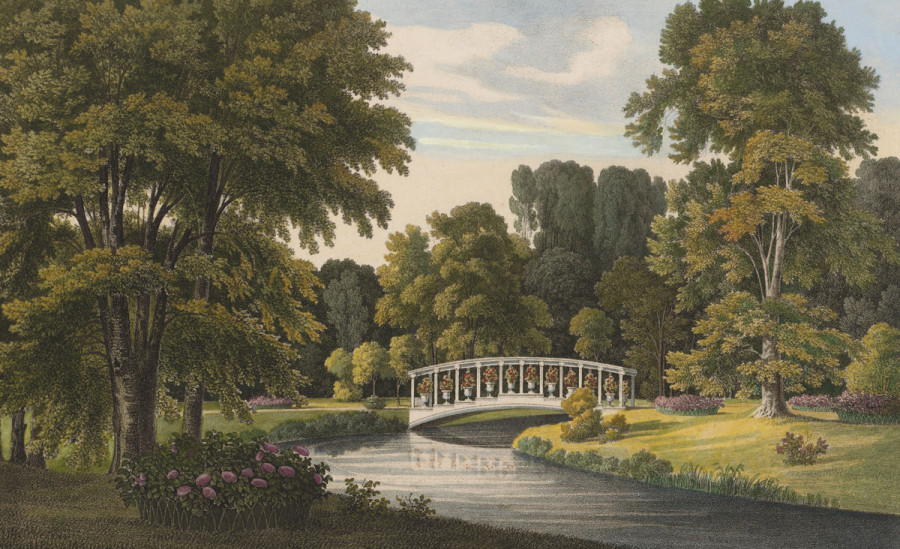
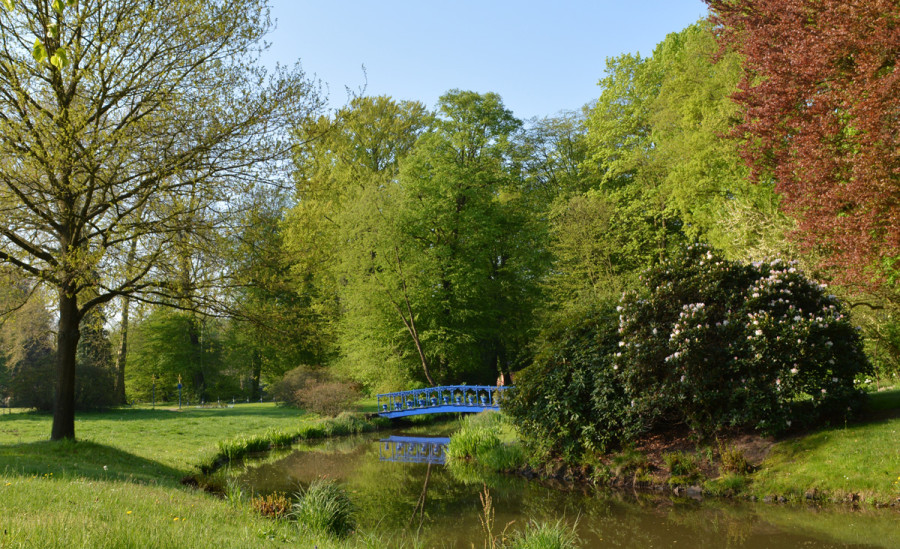
The Blue Bridge
The cast-iron bridge in the Blue Garden was built in 1826 and reconstructed in 1983. Also known as the Fuchsia Bridge after its typical summer planting, the path leads over it from the New Palace to a small hill, popularly known as “Liebeshöhe”.
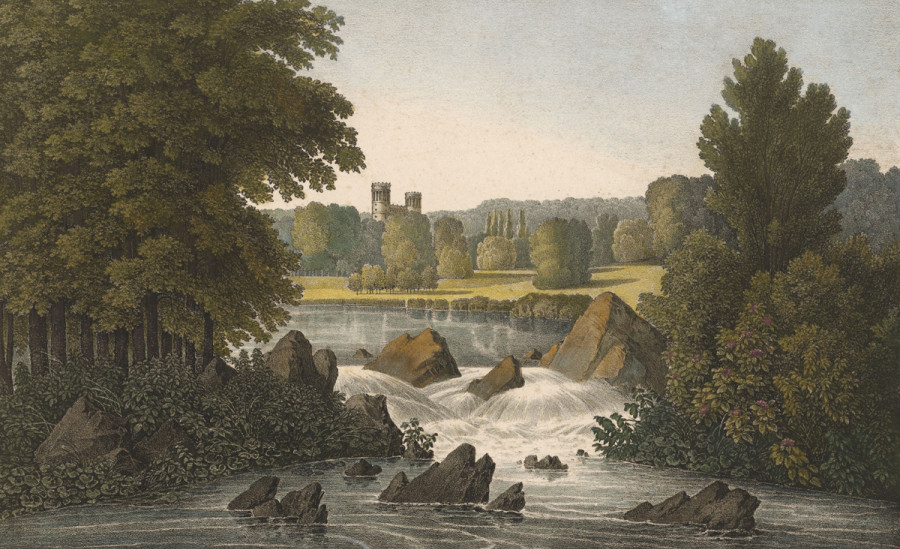
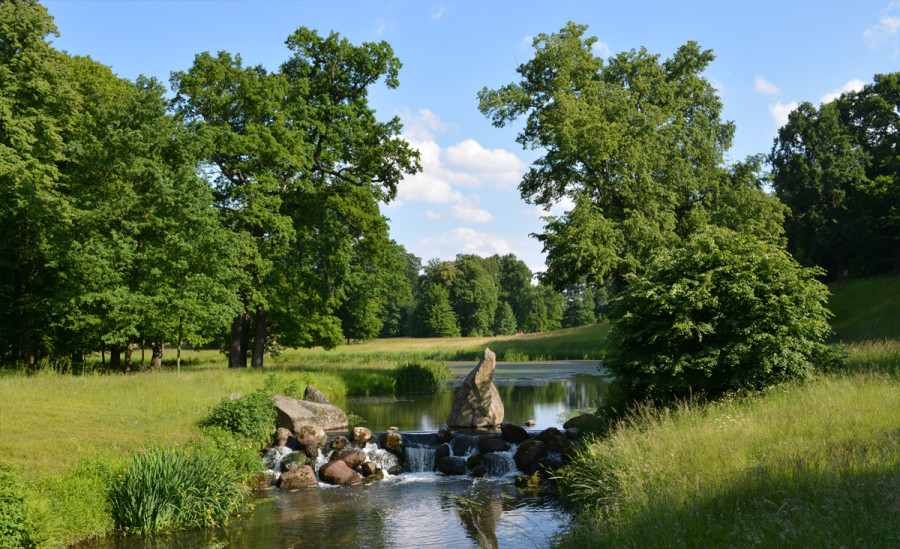
The Eichsee waterfall
Typical of the Eichsee waterfall is its natural-looking design with the help of boulders. One striking feature, however, is an extravagantly towering giant specimen that Prince Pückler's divorced wife Lucie had transported from the Braunsdorf fields on the edge of the park in 1838 during his trip to the Orient and long after the waterfall had been completed.

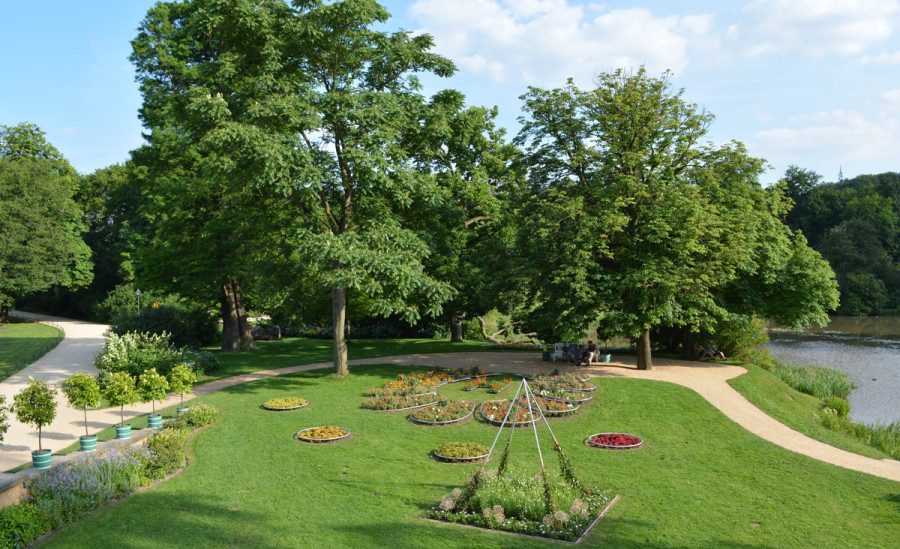
The palace garden
The garden described in Pückler's “Hints” was a joint effort by the princely couple, who began laying out their green living room after filling in the moat and building the castle ramp in 1826. Many imaginative, sometimes very personal flowerbeds, such as the “H” dedicated to Hermann on the central Lindenplatz, were created here. However, some plans were also abandoned, such as the temporary cornucopia.
Pückler's successor
Pückler's heir was Prince Frederick of the Netherlands (1797-1881). He and the later owners, the Counts of Arnim, succeeded in filling in the blank spots in the park's composition left by the prince. They took up unfinished building projects and renewed bridges that were no longer functional.
With a few exceptions, they sensitively integrated new plans into the existing layout.
Division from 1945
At the end of the Second World War, the front line ran through the middle of the Muskauer Neiße Valley for weeks. Around 70 percent of the town, all the Neisse bridges and the Old Castle fell victim to the war. The New Palace burned down on 30th April 30 1945, presumably as a result of arson, and stood in ruins in the park for decades. However, the redefinition of the German-Polish border had the greatest impact on the fate of Muskauer Park. It was determined in accordance with the Allied resolutions of Teheran, Yalta and Potsdam. The Neisse - until then an important link and design element in the park - marked an almost insurmountable dividing line from 1945 onwards.
To the west of the Neisse, the landscape garden was preserved largely intact. Despite a shortage of materials and inadequate park technology, gardeners proved to be extremely inventive. In contrast, the eastern part of the park, for which the Polish forestry administration was responsible, fell into a veritable slumber. Areas became overgrown or were even planted over, creating an impenetrable jungle.
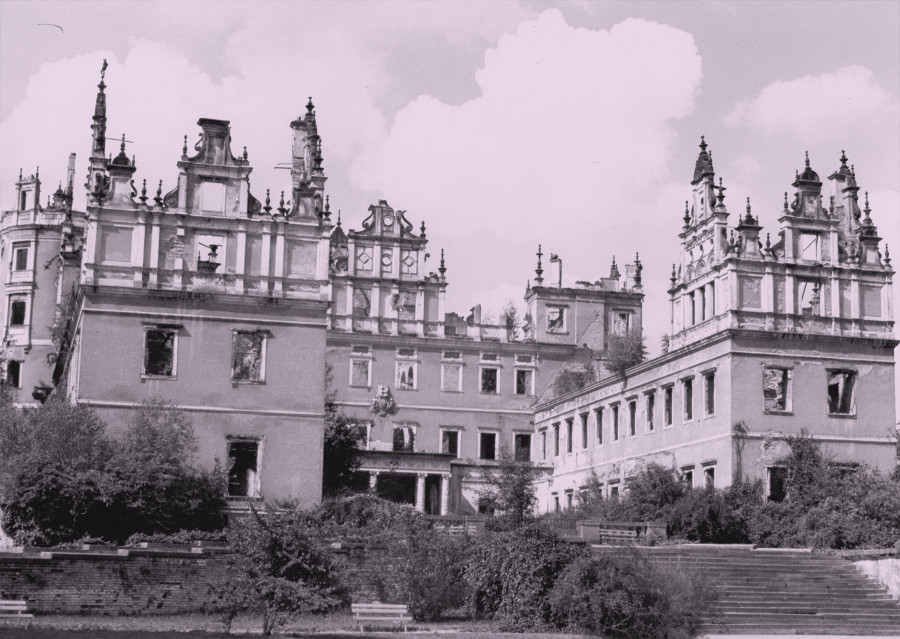
New start after 1988
In an effort to finally reunite the two parts of the park, a breakthrough was achieved in 1988. German and Polish monument conservators signed an agreement in Zielona Góra, Poland, to jointly restore Muskauer Park as a complete work of art. The political turnaround in 1989 made the advance considerably easier. On the Polish side, the park was placed under the direct control of the Ministry of Culture in Warsaw. The German part of the park was transferred from the ownership of the town of Bad Muskau to the Free State of Saxony in 1992.
Under the direction of the “Fürst-Pückler-Park Bad Muskau” Foundation, which was established in 1993, the restoration and renovation of the buildings in the castle park began. These include the orangery, palace outworks, double bridge, English bridge and palace nursery. The reconstruction of the New Palace was completed in 2013.
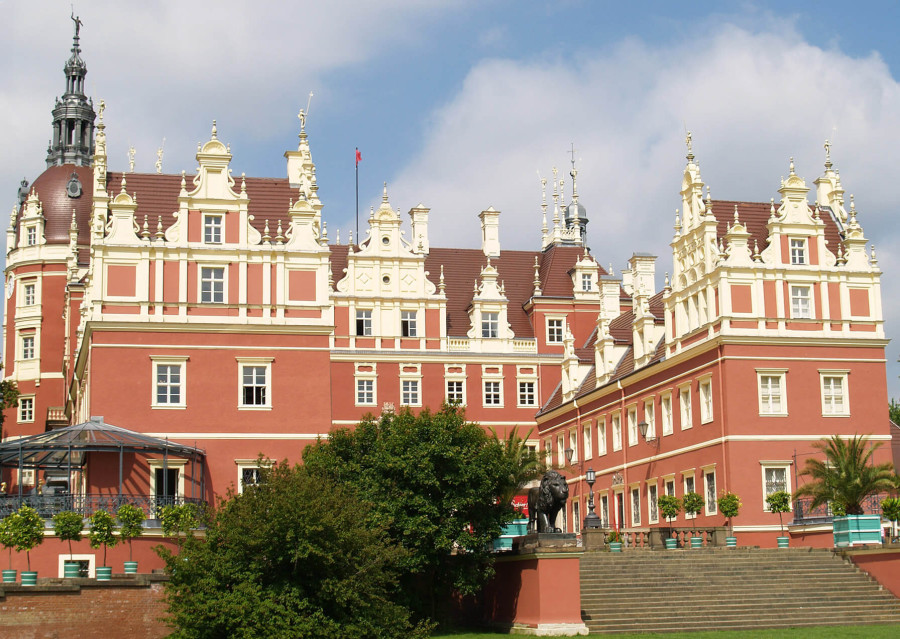
The “Fürst-Pückler-Park Bad Muskau” is a German-Polish joint project and a prime example of our excellent relations with our neighbours. It is without a doubt one of the highlights in the Free State of Saxony, which is truly rich in art.
State Minister Monika Grütters, Federal Representative for Culture and Media, 2016
